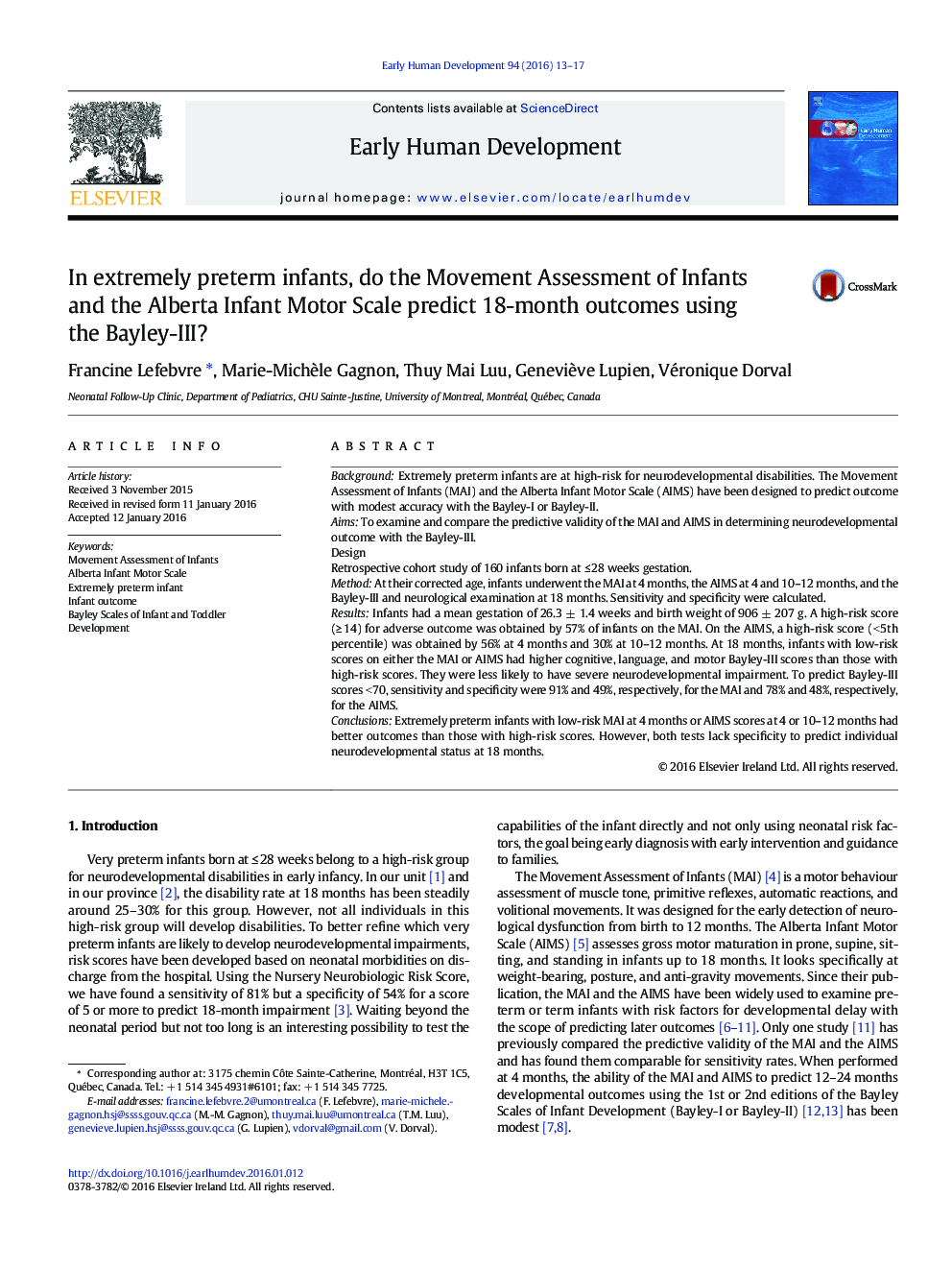| Article ID | Journal | Published Year | Pages | File Type |
|---|---|---|---|---|
| 3916477 | Early Human Development | 2016 | 5 Pages |
•At 4 months corrected age, more than half of extremely preterm infants display a high-risk score for adverse motor outcome on either the MAI or AIMS.•Although preterm infants with low-risk motor scores on the MAI or AIMS have better 18-month neurodevelopmental outcomes than those with high-risk scores, predictive accuracy of 4-month MAI and AIMS remains poor.
BackgroundExtremely preterm infants are at high-risk for neurodevelopmental disabilities. The Movement Assessment of Infants (MAI) and the Alberta Infant Motor Scale (AIMS) have been designed to predict outcome with modest accuracy with the Bayley-I or Bayley-II.AimsTo examine and compare the predictive validity of the MAI and AIMS in determining neurodevelopmental outcome with the Bayley-III.DesignRetrospective cohort study of 160 infants born at ≤ 28 weeks gestation.MethodAt their corrected age, infants underwent the MAI at 4 months, the AIMS at 4 and 10–12 months, and the Bayley-III and neurological examination at 18 months. Sensitivity and specificity were calculated.ResultsInfants had a mean gestation of 26.3 ± 1.4 weeks and birth weight of 906 ± 207 g. A high-risk score (≥ 14) for adverse outcome was obtained by 57% of infants on the MAI. On the AIMS, a high-risk score (< 5th percentile) was obtained by 56% at 4 months and 30% at 10–12 months. At 18 months, infants with low-risk scores on either the MAI or AIMS had higher cognitive, language, and motor Bayley-III scores than those with high-risk scores. They were less likely to have severe neurodevelopmental impairment. To predict Bayley-III scores < 70, sensitivity and specificity were 91% and 49%, respectively, for the MAI and 78% and 48%, respectively, for the AIMS.ConclusionsExtremely preterm infants with low-risk MAI at 4 months or AIMS scores at 4 or 10–12 months had better outcomes than those with high-risk scores. However, both tests lack specificity to predict individual neurodevelopmental status at 18 months.
